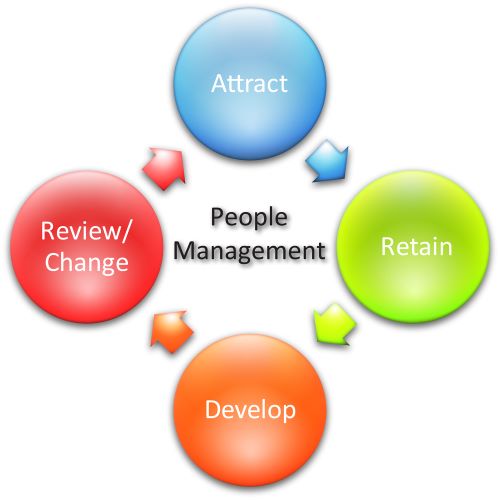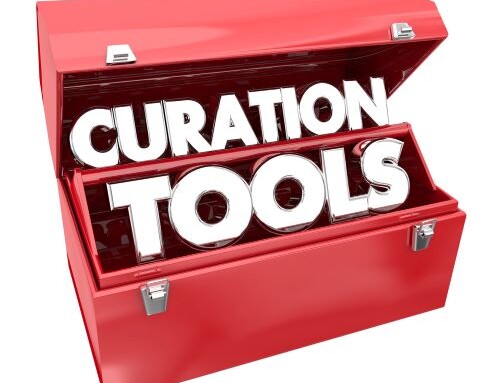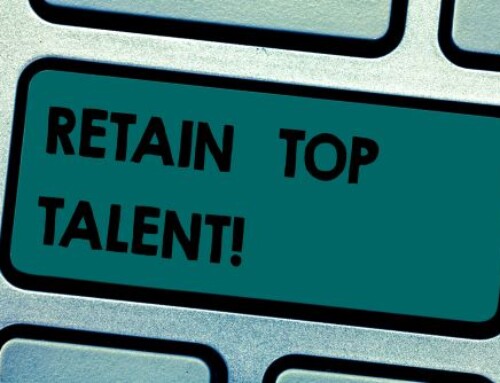Identify Ideal Job Candidates in A Tough Employment Market
The employment market is excellent if someone is seeking a new job. (1) However, for organizations finding the right candidate can be elusive, especially when the role you need to fill goes beyond just having the right skills, experience, education, or training. Today’s job seekers recognize that there are plenty of jobs available, which means they can afford to be selective. Attracting top candidates with talent has always been a challenge, even more so today. On average, every corporate job opening attracts 250 resumes. (2)
Quickly accepting, rejecting, or scheduling an interview is essential for finding employees best suited to your organization’s needs. The sooner you find a qualified job seeker, the sooner the onboarding process can begin. While it is essential to review applicants promptly, the process shouldn’t be rushed. There needs to be a balance of careful assessment and critical timing. As you search and schedule interviews, keep in mind that attracting and hiring the wrong individual can cost you time, money, reputation, and even stakeholders in the long run.
Just because a candidate does not have experience in your field doesn’t mean they won’t make a great employee, especially if they possess the essential soft skills and personality traits. Unless the role you’re hiring for requires industry-specific knowledge, such as needed in a leadership position, there’s no reason not to consider people right out of school or who want to change their careers. A motivated individual should never be underestimated. The power of an individual motivated to learn and who is also a fast learner can be an asset.
When interviewing candidates, the past techniques aren’t practical for today’s job seekers who are savvy and often skilled in handling interrogation-style questions. Update your process and consider the following. These questions may be designed to determine how candidates navigate challenging situations, understand their thought and behavior patterns, and what they learned from experiences. Typical scenarios with follow-up questions might include asking candidates to reflect on tricky situations such as:
- Tell about a time when they made a mistake in the workplace. What transpired, and what did they learn from it?
- Discuss a time they had a conflicting opinion with a boss or management or even a co-worker. How did they address the issue, and what was the outcome?
- Describe a situation where a co-worker created a toxic work environment. What did the candidate do in response to the situation? If the candidate hasn’t experienced this, what might they do if they witnessed toxic behavior, whether it was between co-workers, management, or other stakeholders?
- Give them a scenario where a manager issues a directive (e.g., revoking a warranty because of a bad Google review, denying a refund because there have been too many and it will impact sales quotas, not repairing a typo because this will make numbers look bad to stakeholders, etc.) and they have to make a split-second decision, but the directive isn’t the “right thing to do.” How would they handle the situation?
- Recount an issue involving two parties occurred where they could have been helpful, but they opted to stay out of it, resulting in hardship for one of the parties. What did they learn from that experience? What do they wish they would have done differently?
While these questions can be helpful, they aren’t always truly reflective of an actual candidate’s integrity, how genuine they are, their priorities, critical thinking skills, and level of emotional intelligence. Therefore, organizations must consider other avenues to qualify top candidates besides standard questions with stock answers. Instead of asking questions that candidates can anticipate you will ask (and they can research), be prepared to challenge them.
Here are a few tips to really get to know your applicants and to help your organization stand out in the process:
Avoid committee interviews…at least initially.
Committee interviews are intimidating. It’s difficult for candidates to get personal and relax. If you want to find out who someone really is, they need to make a personal connection. Start out interviews small, one-on-one. Get to know the person – which means you (the organization) need to do your own diligence. It doesn’t need to be creepy but look at someone’s social media profiles. Find out if they love traveling, baseball, cats, or cooking. Use these as introduction points to break the ice and find common ground. Often sales team members can be accommodating with this process because they are used to making introductions and finding common connecting points.
After the initial introductions, a great place to start an interview is to ask the candidate to “Tell me your story.” And while they are telling you their story, take note and look for points where you can make a personal connection. Are they open or guarded? Do they talk about their family, or just themselves? Or are they giving you their rehearsed 2-minute elevator speech? (3)
Once you’ve built a connection, maybe after 15 minutes, bring in a few others and allow them equal opportunity to connect. Remember, a great culture starts with people connecting. Build from this point onward!
Separate skills testing from an interview.
Job roles and the skills required to do them are two different entities. The role itself is all about the person performing the job. These skills are what are needed to keep the workflow moving. Proficiency and skill set tests should be handled outside of the interview itself. Whether a person has the education and training to DO the job is very different than whether they have the people talent and intuition to WORK in the position.
By separating the two skill sets, your interview time can capture how candidates utilize skills daily. This can be quickly done through real-world scenarios. For example:
- You have a report that’s due every Friday. However, due to a system failure, you aren’t able to provide the information on time. How would you handle this? Would you have any safeguards you might put in place to prevent this issue? If yes, can you give examples of what those might be?
- You notice that something with the code is triggering an error, but it shouldn’t be. You didn’t write the code but know how to fix it. What would you do?
- You’re writing up an order and notice that the pricing has been incorrectly calculated due to a glitch on the website. This is an excellent customer, and you don’t want to lose the sale. What do you do?
- Your boss is out of town at a conference, and a different manager is covering for her. One of your co-workers is taking advantage of their friendship with the covering manager, and now you’ve been bombarded with other projects that your co-worker should be doing. You’re falling behind because of the additional workload. How would you handle this situation?
- A worker in a different department is the subject of gossip and workplace bullying. You’ve seen her crying in the bathroom several times. Management seems to be unaware of the problem. Should you get involved, and if so, how and why?
- You take a support call from an angry customer because their delivery hasn’t arrived. Your delivery system is showing it has been delivered. How would you address this situation?
Pull from case studies.
Case studies aren’t just for buying customers. They can be used by job candidates to gain insights into how they think, feel and understand various situations and scenarios. While these don’t have to be specific to your organization’s internal case scenarios, they should be relevant to your industry.
As you think about case studies, ponder case studies that would make your job candidates think:
- Connect with the story. What is the problem or issue? How might they approach it? What solutions might they consider? What did they think of the solution and outcome? Would they add anything else?
- Discuss something similar that they are familiar with. Have they been through a similar situation? What was that like for them? What did they learn from that experience? What did they discover that was really good? Did they uncover something they didn’t know before that they will never forget going forward? Was there a life lesson?
- Reading or involvement in trade or industry events/publications. Is there something new, interesting, or evolving that you’d like to get their insights about? (Don’t make these trick questions, by the way! Ask because you really want to know what candidates think and see if they are familiar with your industry!)
As you ask each question, give the candidate time to formulate their answer and response. Look for their reaction to the questions and their facial expressions. They should seem eager to work through the question, which shows they enjoy overcoming challenges.
Summary
As your organization seeks the elusive perfect candidate to hire, it is best not to rush the process because you have an immediate need for a hire. Companies need to be sure that the perfect candidate is indeed the right fit for the organization. Hiring the wrong person can be costly in many ways. Negative comments across social media and online can impact an organization’s reputation for buyers and potential new talent.
Hiring the right talent and employing talented professionals is a challenge. But, when done correctly, it is beneficial to both the individual hired and the employer.
Discover more inspiring ideas for exciting experiences that boost morale and engage your people. Contact Gavel International for details.
_____________________________________
SOURCES
- https://www.forbes.com/sites/nextavenue/2022/02/25/what-you-need-to-know-about-the-job-market-in-2022/
- https://www.inc.com/peter-economy/19-interesting-hiring-statistics-you-should-know.html
- https://workbloom.com/networking/describing-yourself-2-minutes-elevator-pitch
This article was last updated on September 21, 2022
- The B2B Guide to Master Modern Meeting Planning - February 17, 2025
- 12 Words that Hurt Marketing Copy and Efforts - January 13, 2025
- Gavel International Marks 40 Years with Acts of Kindness - December 19, 2024






